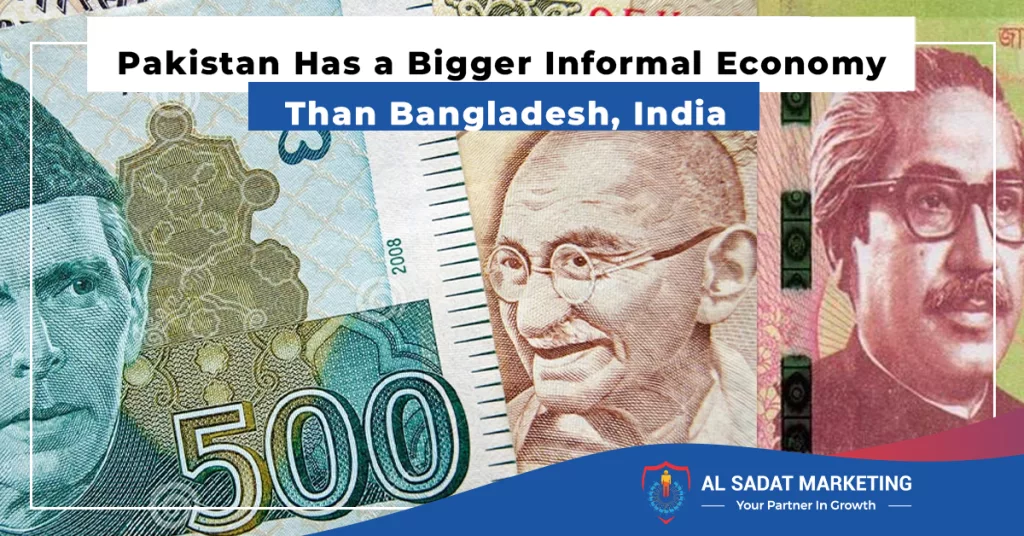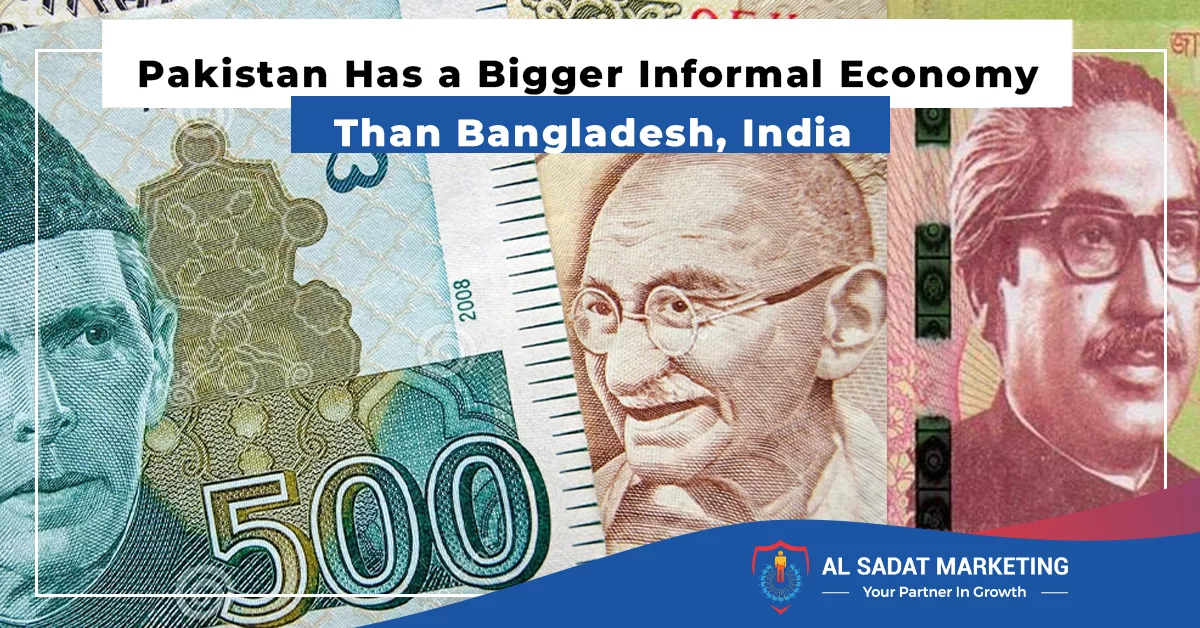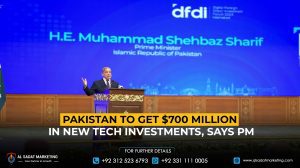Pakistan Has a Bigger Informal Economy Than Bangladesh, India

In Pakistan, the reported currency in circulation (CiC) has risen to more than Rs. 8 trillion, reflecting the expansion of the economy and the prevalence of cash transactions.
Read More: Spotify Gets Major Redesign Similar to TikTok and Instagram
A CiC-to-bank deposit ratio of 34%, higher than that of Bangladesh and India, demonstrates that Pakistan has a larger informal sector than its South Asian competitors. Total deposits with local banks have increased to Rs. 23 trillion.
Bangladesh had BDT 15 trillion in total bank deposits as of 2022, compared to BDT 2.5 trillion in CIC, or 16.7 percent of total bank deposits. India currently has approximately Rs. 180 trillion in total bank deposits and INR 32 trillion in circulation (17.8 percent).
Liquidity, PKR Drop, and Real Estate Joke
Our economy’s non-taxed sectors typically accept cash, and their usage is expanding. Most people refuse to pay income taxes, particularly those in the real estate industry, Kiryana stores, freelancers, plumbers, doctors, dentists, electricians, jewelers, and citizens.
Read More: Slack Becomes the Newest Messaging Platform to Get a ChatGPT Integration
More over 50% of Pakistan’s GDP comes from the service industry, which is primarily cash-based and poorly documented. Pakistan has a far higher percentage of its total money supply in circulation compared to Bangladesh and India.
Pakistan has experienced special hardship during the fiscal year 2022–2023 as a result of unusually intense demand on rupee liquidity in the interbank market. This liquidity squeeze was brought on by a number of macro variables and resulted in a halt in deposit growth and an increase in the amount of money in circulation.
Read More: YouTube Desktop Will Stop Showing Overlay Ads Soon
These include exorbitant interest rates, excessive inflation, inadequate deposit mobilisation activities, and seasonal withdrawals of sizable amounts from deposits brought on by a rise in the need for cash from the general public to pay for expenses.
Due to the PKR’s devaluation versus the US Dollar, the State Bank of Pakistan’s (SBP) open market operations (OMOs) aren’t helping either. One of the main causes of the inflation spike to 50-year highs and money flowing out of banks and into the informal sector in 2023 was the central bank injecting Rs. 8.9 trillion through OMOs.
Read More: iPhone 14 Series is Now Available in a New Yellow Color
Last but not least, real estate is the biggest beneficiary of the currency leaving banks. Plots continue to be a safe haven for the preservation of grey money due to a bad taxation framework, significant distortion in the reported and transaction value of real estate assets, and amnesty measures to further accelerate capital flow to real estate rather to actual productive channels.
Because real estate is a safer structure than investing in the formal sector, a market that is mostly dependent on cash assures that fire sales are rare. Instead, investors choose to stay underwater.
Next Steps?
In Pakistan, a fall in the savings rate during the past ten years has been matched by an increase in CiC as a proportion of GDP, showing that a growing amount of economic activity is carried out without the use of traditional financial institutions like banks.
CiC would need to be reduced by Rs. 4 trillion ($15 billion) for Pakistan’s CiC to be at the same level as regional peers (average of 17.25 percent). Although it’s theoretical, a lot of analysts have suggested that SBP should punish banks and refrain from offering a “OMO olive branch” if one of them runs out of small cash.
Read More: SECP Issues Updated List of Active Insurance Brokers
All things considered, even without banks, Pakistan’s unregistered cash economy is growing quickly. The caveat is that there must be limitations on the cash economy. The amount of money in circulation has increased since 2015, which shows that money isn’t recirculating in the economy. It is evolving into a miniature economy.
For more updates, stay tuned to Al Sadat Marketing News.
You can also invest in other famous and most in demand housing societies, such as , Blue World City, Rudn Enclave, 7 Wonders City Peshawar, Taj Residencia, Kingdom Valley, New Metro City Gujar Khan, Forest Town Rawalpindi, University Town Rawalpindi, ICHS Town, Park View City Islamabad, Multi Gardens B17 Islamabad and Nova City Islamabad.
Al Sadat Marketing please contact 0331 1110005 or visit https://alsadatmarketing.com/
Few more real estate housing schemes which are trending now a days in Islamabad by including: Faisal Town Phase 2, Prism Town Gujar Khan, New City Paradise, Eighteen Islamabad, 7 Wonders City Islamabad, Capital Smart City, Silver City Islamabad, The Life Residencia, Faisal Town Islamabad, Islamabad Golf City, Islamabad Model Town and Marble Arch Enclave.
Al Sadat Marketing is an emerging Real Estate Agency headquartered in Islamabad, Pakistan. With over 10+ Years of experience, Al Sadat Marketing is providing its services and dealing all trending housing societies projects in different cities of Pakistan. Islamabad Projects, Rawalpindi Projects, Gujar Khan Projects, Burhan Projects, and Peshawar Projects etc.
Book Your Plot Now: +92 331 111 0005










